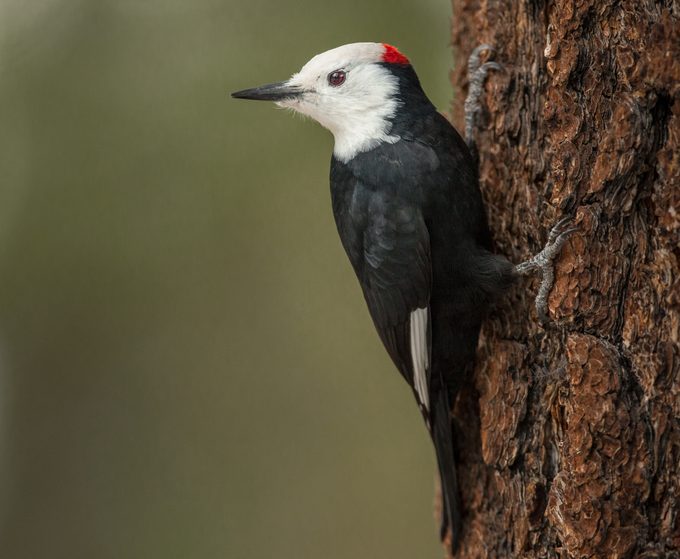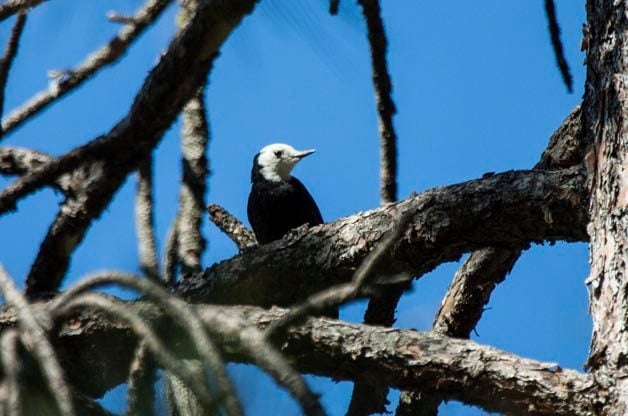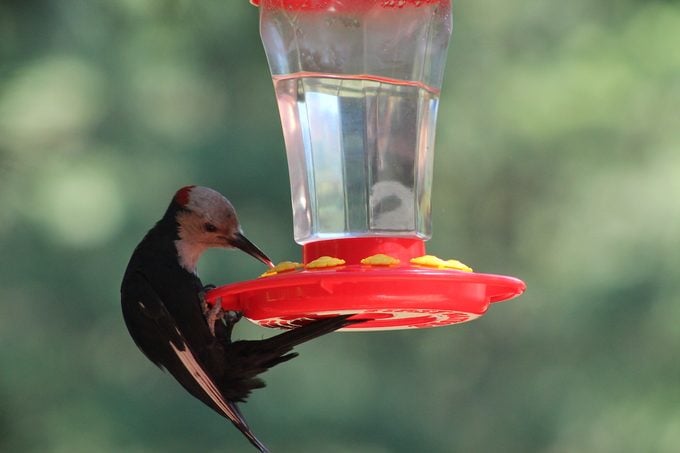All About the White-Headed Woodpecker
Updated: Jan. 17, 2024
Learn what a white-headed woodpecker looks like and where to spot this species. Also find out how you can attract the birds to your yard.
What Does a White-Headed Woodpecker Look Like?

As its name indicates, the easiest way to identify a white-headed woodpecker is by seeing its bright white head. Males have a small red patch at the back of the head that females lack. On young birds, look for a faint red patch on their crown. The medium-sized body is mostly black. White wing patches are more visible in flight.
Birders may confuse the white-headed woodpecker with the similar looking acorn woodpecker, but this species has a completely white face.
Meet more types of woodpeckers birders should know.
Range and Habitat

Look for this woodpecker year-round in the mountainous pine forests of the Pacific states. They are fairly common in California and less often spotted in Oregon, Washington and Idaho. Their range also extends north into British Columbia.
Like black-backed woodpeckers, these birds often congregate in forests after wildfires.
Birds & Blooms contributor Rob Ripma photographed this white-headed woodpecker (above) while birding in Idyllwild, California.
Also look for the Nuttall’s woodpecker in California.
Diet

These birds love to eat pine seeds and also fuel up on a variety of insects and spiders. Similar to sapsuckers, they may also drill holes into trees to access sweet tree tap.
You may be able to attract them to your backyard with a suet feeder.
Why do woodpecker visit hummingbird feeders?
Nesting Habits

These birds are cavity nesters that excavate holes in dead trees. Females lay a clutch of three to seven white eggs.
Learn how to identify red-cockaded and red-headed woodpeckers.
Call and Sounds
According to the Kaufman Field Guide to Birds of North America, birders should listen for a sharp whick or whick-ick sound, as well as a shrill rattling call.
Next, discover mind-blowing woodpecker facts you should know.




















